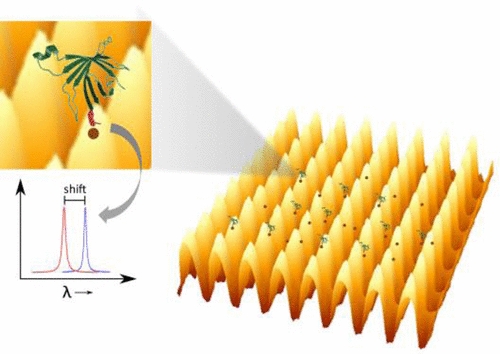Dr. Ribal Georges Sabat from the Department of Physics at the Royal Military College of Canada, along with Dr. Carlos Escobedo and his PhD student, Srijit Nair, both from Queen’s university at Kingston, developed a light-based bio-molecular sensor for protein binding detection in fluids, via measuring a very small refractive index change of the fluid. This biosensor will prove very useful in biomedical applications because it allows the detection of very small concentrations of toxins or other biological molecules in liquids. The team used a unique sensing approach that enables the measurement in transmission mode of surface plasmon resonance signals only, while cancelling all other transmitted light. The broadband light intensity passing through the fabricated biosensor was found to be zero except in the narrow bandwidth where a surface plasmon resonance energy conversion occurs, enabling quantitative monitoring of only the plasmonic signal from bio-molecular interactions. The results from this study demonstrate the label-free detection of biotin-streptavidin binding in real-time, with a much-improved sensitivity (+3-fold) compared to previously reported biosensors. This new biosensor was cheap (less than 10 cents per unit) and easy to fabricate. It is believed that this is a significant advancement in plasmonic based sensing in a world that is evolving towards the use of diagnostics tools based on portable electronics.
 Low-cost nanoplasmonic (bio)sensor based on crossed surface relief gratings (CSRGs) on gold-coated azo-glass substrate.
Low-cost nanoplasmonic (bio)sensor based on crossed surface relief gratings (CSRGs) on gold-coated azo-glass substrate.More details about this discovery are found at: Crossed Surface Relief Gratings as Nanoplasmonic Biosensors.